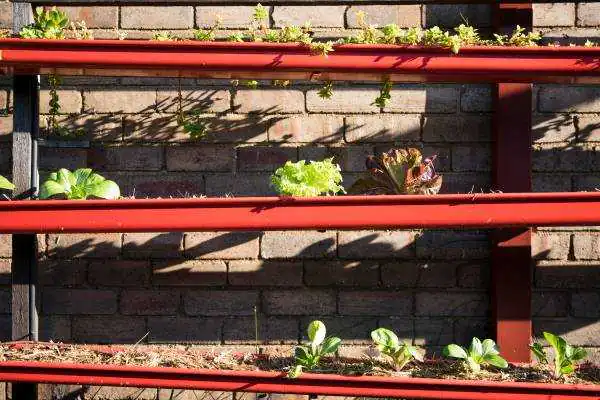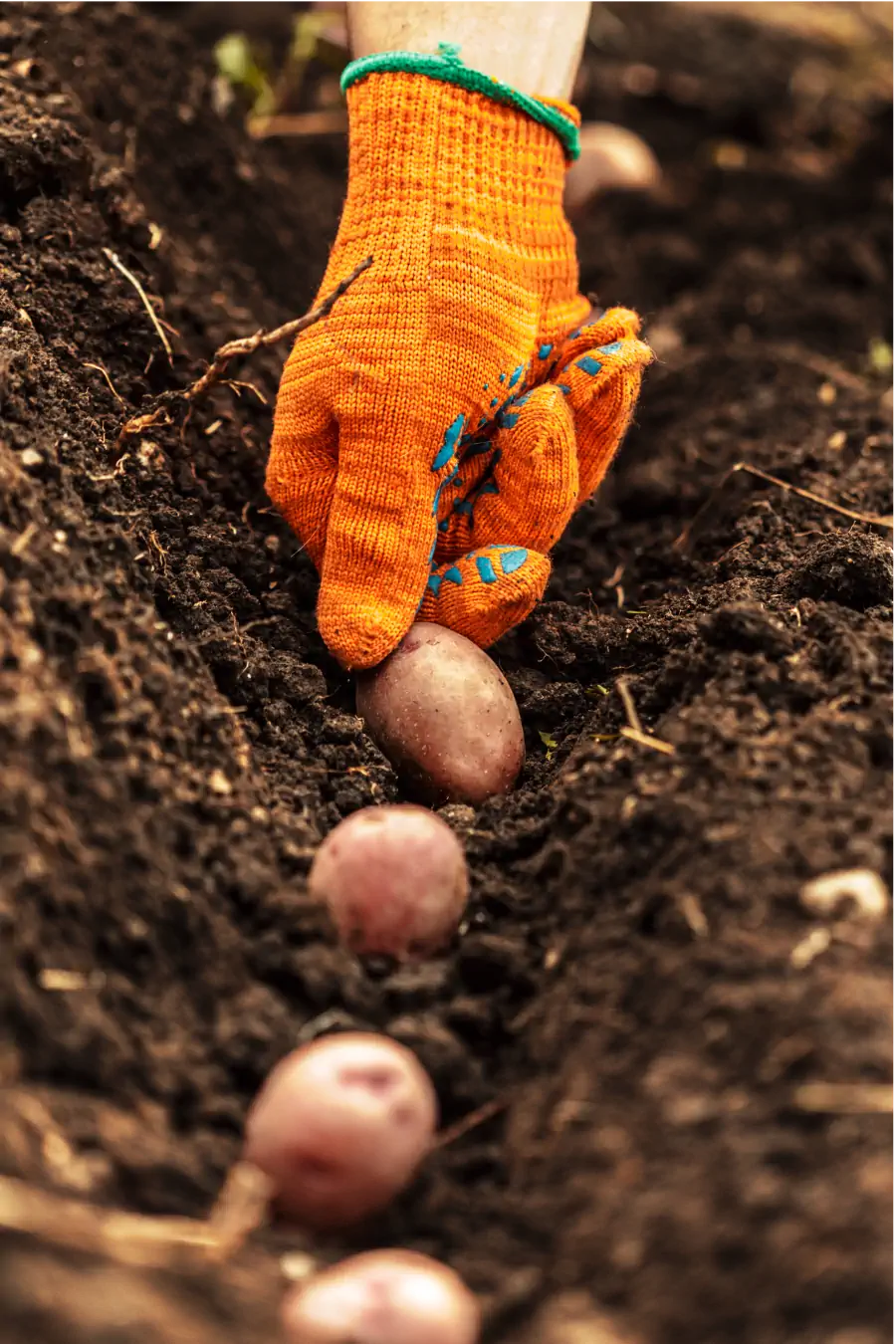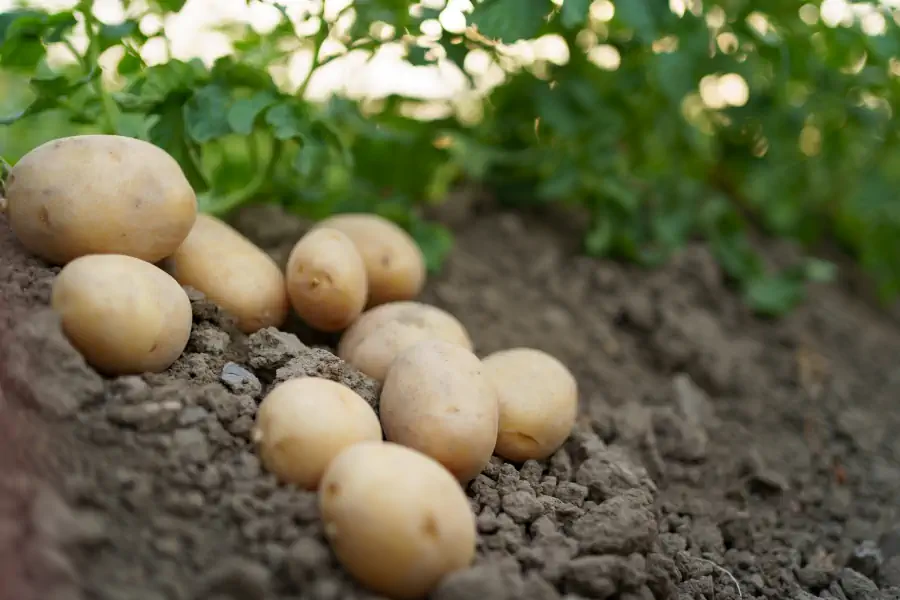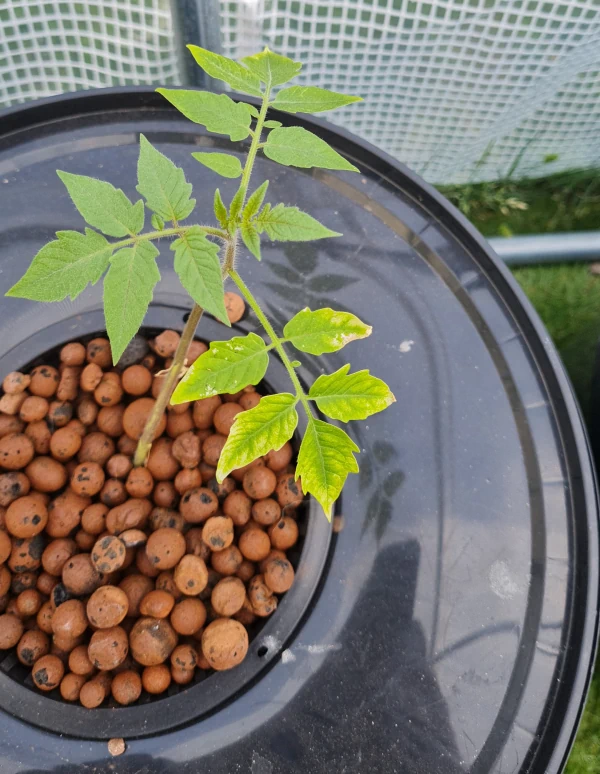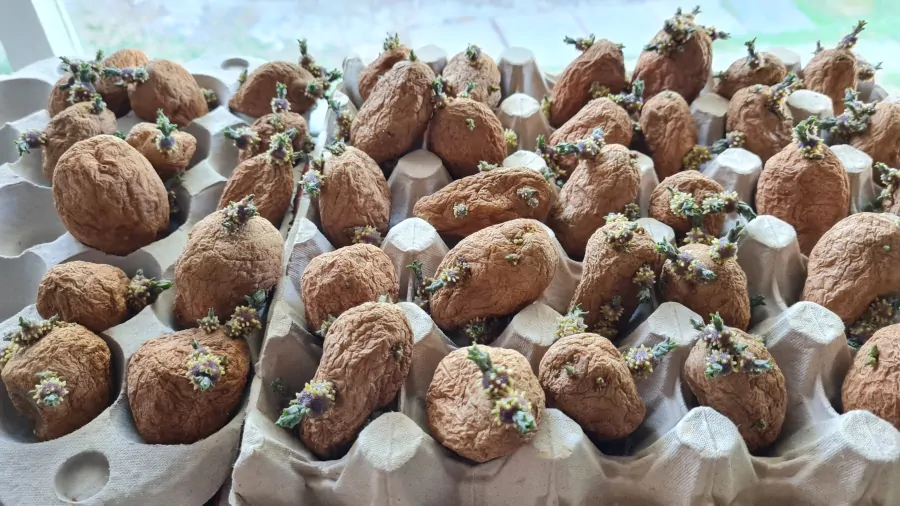Introduction
A gutter garden is a unique and functional way to bring greenery into your home without taking up too much space. It involves repurposing old gutters to create a garden bed for planting a variety of herbs, vegetables, and flowers. This type of garden is particularly beneficial for those living in small spaces, such as apartments or homes with limited outdoor areas, as well as for those looking for patio garden ideas.
List of materials needed for building a gutter garden
- Gutters (new or old)
- End caps (to close off the ends of the gutters)
- Brackets (to attach the gutters to a wall or fence)
- Drill and screws (for attaching the brackets)
- Soil (to fill the gutter bed)
- Plants (herbs, vegetables, or flowers)
- Gravel or other drainage material (optional)
- Lining material (such as burlap or landscape fabric, optional)
When repurposing old gutters for your garden bed, you may also want to consider using gutter sections of varying lengths to create a unique and visually appealing design. Additionally, you can paint or decorate the gutters to match your home’s decor or add a pop of color to your outdoor space. By reusing materials and getting creative with your design, you can build a sustainable and beautiful garden for your small space or patio garden.
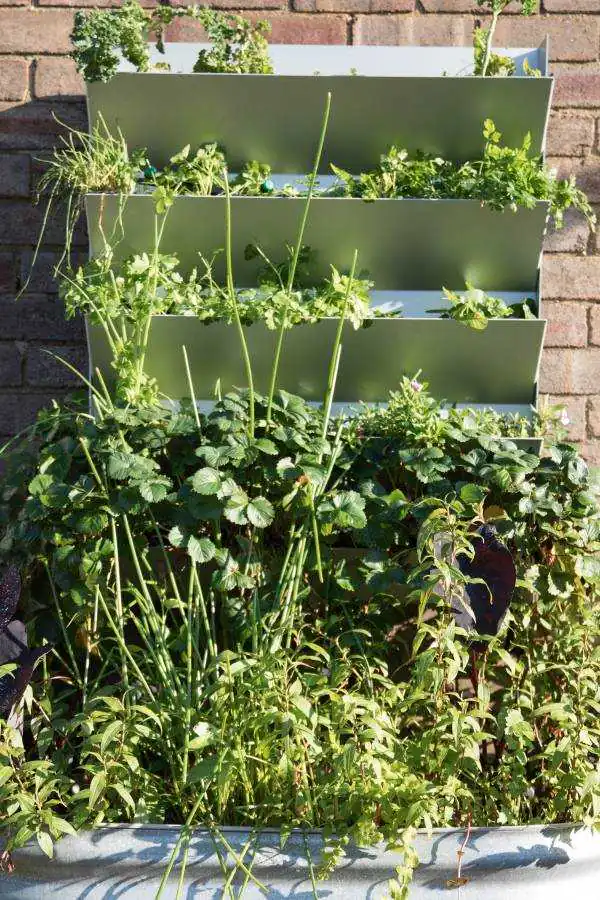
Choosing the right location for your gutter garden
Choosing the right location is an essential step in creating a successful gutter garden. Even in small spaces, you’ll want to find an area that receives plenty of sunlight and is easily accessible for maintenance. When considering locations for your gutter garden, keep the following factors in mind:
- Sun exposure: Most plants require at least six hours of sunlight each day to thrive, so look for a location that receives plenty of direct sunlight. If your space is limited, consider installing your gutter garden on a south-facing wall to maximize sun exposure.
- Accessibility: You’ll need to be able to reach your gutter garden for watering, fertilizing, and harvesting, so choose a location that is easily accessible. Avoid installing your the gutters for your garden in areas that are difficult to reach or require you to climb to reach the plants.
- Water source: Depending on the size of your gutter garden, you may need to water it regularly, so choose a location that is near a water source, such as a hose or watering can. If a water source is not readily available, consider installing a rain barrel nearby to collect rainwater for your plants.
- Weight-bearing capacity: Gutters filled with soil and plants can be heavy, so make sure the location you choose can support the weight. If you’re installing your gutter garden on a wall or fence, use sturdy brackets and check that the structure can handle the weight.
By considering these factors, you can choose a location that will provide optimal growing conditions for your plants and make maintenance a breeze.
Preparing the gutters
Once you’ve chosen the perfect location for your gutter garden, it’s time to prepare the gutters for planting. The first step is to clean the gutters thoroughly to remove any debris or dirt that has accumulated over time. This will help prevent clogs and ensure proper drainage for your plants.
Next, consider adding drainage material, such as gravel or small stones, to the bottom of the gutters. This will help prevent water from sitting in the gutter bed and causing root rot in your plants. If you choose to add drainage material, be sure to cover it with a layer of landscape fabric or burlap to prevent the soil from washing away.
You may also want to consider lining the gutters with a layer of landscape fabric or burlap to help retain moisture in the soil and prevent it from drying out too quickly. Lining the gutters can also help prevent the soil from spilling out through the drainage holes in the bottom of the gutters.
By taking the time to prepare your gutters properly, you can ensure that your plants will have the best possible growing conditions and thrive in your gutter garden.
Installing the gutter garden
Once you’ve prepared your gutters, it’s time to install them. Here are the steps for installing your gutter garden:
- Attach the brackets to the wall or fence where you want to install the gutter garden. Make sure the brackets are level and secure.
- Connect the gutters by sliding one end into the other until they click into place.
- Add end caps to the ends of the gutters to close them off and prevent soil from spilling out.
- Attach the gutters to the brackets using screws and a drill. Make sure the gutters are level and secure.
- If you’re installing multiple gutters, connect them using downspouts or pipes to allow water to flow from one gutter to the next.
Once your gutter garden is installed, fill it with soil and get ready to plant!
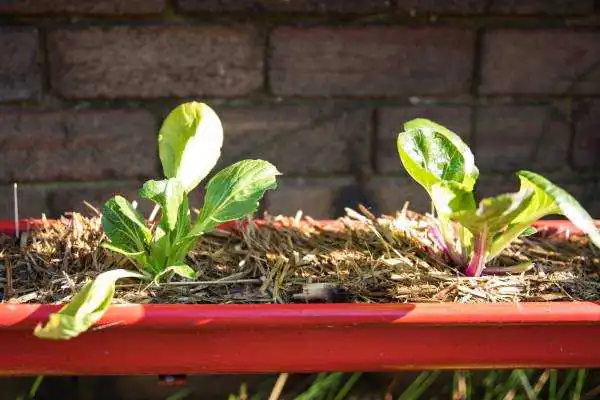
Planting in gutters
Choosing the right soil and plants is key to success. When selecting soil for your gutter garden, look for a high-quality potting mix that is specifically formulated for container gardening. These mixes contain a blend of organic matter, such as compost, and nutrients that will help your plants grow strong and healthy.
When it comes to selecting plants, there are many options to choose from. Herbs like basil, thyme, and parsley are great choices for small spaces and can be used in cooking. Vegetables like lettuce, kale, and cherry tomatoes also do well when your grow them in gutters and can provide a bountiful harvest in a small space. For flowers, consider planting varieties like petunias or pansies for a splash of color.
When designing your gutter garden, consider using a mix of plants with varying heights and textures to create visual interest. You can also use trellises or stakes to support vining plants like tomatoes or cucumbers.
With these tips, you can create a beautiful and productive gutter garden that will thrive in your small space or patio garden.
Maintenance and care
Like any garden, your gutter garden will require some maintenance and care. Here are some tips for keeping your garden healthy:
- Watering: Make sure to water your gutter garden regularly, especially during hot weather. Check the soil moisture level daily by sticking your finger into the soil up to the second knuckle. If the soil feels dry, it’s time to water.
- Fertilizing: Container plants need regular fertilization to stay healthy. Look for a slow-release fertilizer that is specifically formulated for container gardening.
- Pruning: Regular pruning will help your plants stay healthy and promote new growth. Trim off any dead or yellowing leaves, and pinch back the tips of vining plants to encourage bushier growth.
10 things that you can plant in a gutter garden
- Herbs:
Basil, thyme, oregano, parsley, and chives are all great herbs to grow in a gutter garden. - Leafy greens:
Lettuce, spinach, and kale are excellent choices for a gutter garden and can provide you with fresh greens for salads. - Strawberries:
These delicious berries do well in a vertical garden and can provide a sweet harvest in the summer. - Cherry tomatoes:
Compact varieties of cherry tomatoes do well in a gutter garden and can provide a plentiful harvest throughout the season. - Peppers:
Bell peppers and chili peppers do well in gutter gardens and can add a pop of color to your garden. - Radishes:
These easy-to-grow vegetables do well in a vertical garden and can provide a peppery crunch to your salads. - Carrots:
Smaller varieties of carrots can be grown and can provide a sweet and crunchy addition to your meals. - Flowers:
Bright and colorful flowers like petunias, pansies, and marigolds can add a pop of color to your garden and attract pollinators. - Strawflower:
These drought-tolerant flowers come in a variety of colors. They are great for adding a touch of color to your garden. - Succulents:
These low-maintenance plants do well in gutter gardens and can add a unique and interesting texture to your garden design.
Conclusion
Gutter gardens are a great way to garden in small spaces and on patios. With a little bit of creativity and care, you can create a beautiful and productive garden that will provide you with fresh herbs, vegetables, and flowers throughout the growing season. So why not try building a gutter garden and enjoy the benefits of home garden ideas for small spaces?

